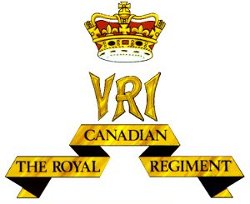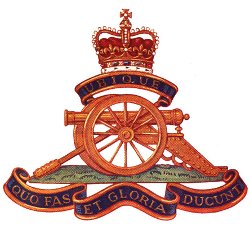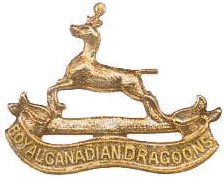Topic: The RCR

Royal Canadian Infantry

TThe Royal Canadian Regiment originated on 21 December 1883, when the 'Infantry School Corps' was authorized to be formed.
(For further details on the lineage of The RCR.)

The regiment originated on 10 August 1883, when the 'Regiment of Canadian Artillery' of the Permanent Active Militia was authorized to be formed. It was redesignated 'The Royal Canadian Artillery' on 24 May 1893.
(For further details on the lineage of the RRCA. Individual Artillery unit lineage documents may be found here.)

The Royal Canadian Dragoons originated in Quebec City, Quebec on 21 December 1883, when the 'Cavalry School Corps' was authorized to be formed. It was redesignated the 'Canadian Dragoons' on 14 May 1892.
(For further details on the lineage of the RCD.)
The Toronto Daily Mail, 8 December 1894
This letter was a response to this letter to the Editor.
To the Editor of The Mail:
Sir,—In a somewhat bitter letter that appeared in your columns recently, Lieut.-Col. O'Brien, 35th Battalion, makes a strong attack on the Royal Regiment Canadian Infantry with reference to the offer by our Government of that regiment in case of need. We will not stop here to reflect on the spirt of hostility to the permanent corps with which Col. O'Brien's letter abounds, though to any true soldier it is a most regrettable thing that men in high military and official positions should take such ground, but will deal with one or two statements which appear strongly in the foreground.
Col. O'Brien speaks of the "Royal Regiment Canadian Infantry," as a legal myth existing in the minds of the Dominion Government, and he further states that money is granted not for a royal regiment but for the maintenance of schools of instruction. Let us review the situation from the inception of these schools, and we will see that the Government is pursuing exactly the same policy as it did ten years ago. When these schools were established they were then, as now, in connection with a permanent body of men enlisted for continuous service under the Queen's Regulations, and even then were intended not only for instruction but as a nucleus for a force which should be better able to take the field at a moment's notice than the militia. These bodies of men were not, however, as Col. O'Brien would suggest, independent, unorganized companies. On the contrary, their title was that as the "Infantry School Corps," in which the permanent officers, whether at Fredericton or Toronto, held rank and precedence. A subaltern at St. John's or London was then a lieutenant in the Infantry School Corps, as he is to-day in the Royal Regiment Canadian Infantry, and the body of men who constituted the Royal School of Infantry at Toronto were then "C" Company, Infantry School Corps, as they now are No. 2 Company, R.R.C.I. In 1893 the name was changed to that of the Canadian Regiment of Infantry, the different companies, as before, constituting schools of instructions for the various districts, and shortly afterwards her Majesty was graciously pleased to allow them the title "Royal" and the imperial cypher, an act of no little significance. No doubt it is sad to think that no such regiment really exists, and that her Majesty had been deluded by a "legal fiction," but we will hope that she will not see Col. O'Brien's letter.
By the way, what about the Regiment of Royal Canadian Artillery and the Royal Canadian Dragoons? Do they not exist either? Col. O'Brien sneers at the idea of a comparatively few men presenting themselves as the Canadian contingent. I would call his attention to the fact that when, two years ago, a mere handful of officers and men from the permanent corps presented themselves in England they got a reception that could not be excelled; and if Canada did send men to the help of the Mother Country it would be as a regiment of not less than five hundred men. Yet the spirit that prompts, and not the number sent, is what counts. There are, indeed, in the militia, of which I have the honour to be a subaltern, many thousand men who would gladly respond to the call of the Mother Land for help, but obviously the ones first to go are those without responsibility as private citizens and who are also so perfect in drill, equipment, and clothing.
But, after all, Col. O'Brien might have spared himself the trouble, for second and more authentic reports are to the effect that the Canadian Government offered the R.R.C.I. to the Imperial Government to garrison Halifax citadel. This would have allowed the King's Liverpool Regiment, now quartered there, a start of at least six days over their comrades from England in their race to the Orient. Also, the R.R.C.I., could still have performed their duties of imparting military instruction while at Halifax.
One question more. The Government has made arrangements whereby officers may take a course of instruction at the citadel in Halifax with the King's Regiment. Does this arrangement invalidate the claim of the British troops there to be called a regiment?
Yours, etc. Infantry Officer Eastern Ontario, Dec 1

